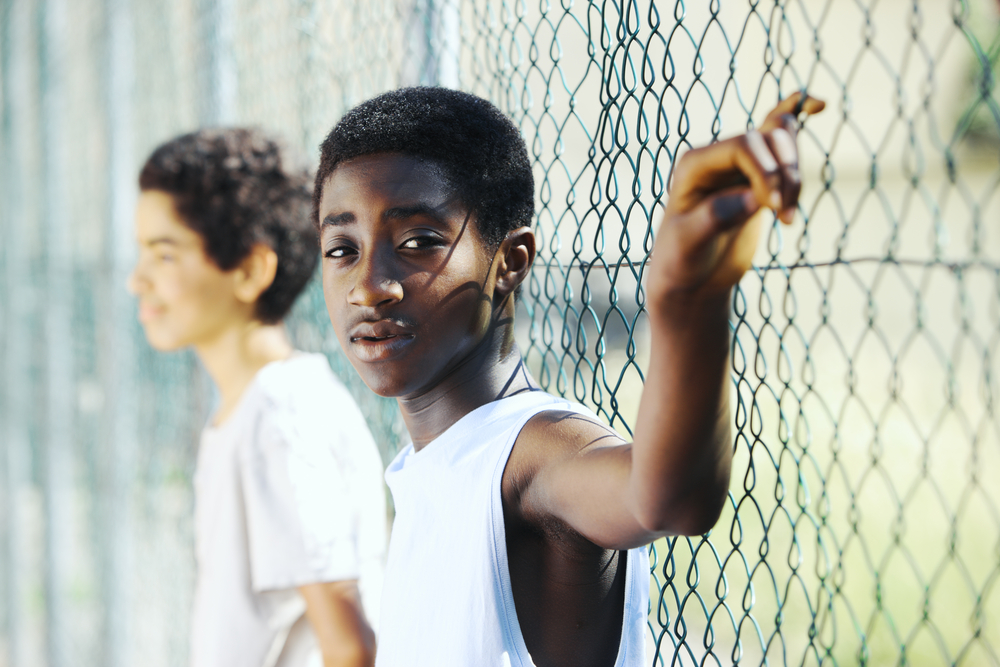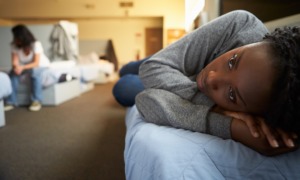
Stokkete/Shutterstock
.
Neighborhood conditions like exposure to violence are unacceptable, and undoubtedly create numerous negative outcomes. However, there are additional factors that consistently show up for youth involved in gun violence that are often not seen as important to stopping gun violence, and thus are overlooked in policy solutions. Until we address these factors, youth gun violence prevention will remain stymied.
Youth involved in gun violence did not wake up one day and decide to hurt others; there is a slow burn that ignites this fire. The slow burn varies but feels the same — exclusion, rejection, betrayal, victimization, traumatization.

Stephanie Ueberall
Throughout these far-too-often harsh experiences, youth are expected to get on with life — go to school the day after your best friend was murdered, comply with policies that actually harm you, fear for your life but please get a job. However, eventually the impact catches up. By this point, youth have heard the message loud and clear — they don’t matter.
When we push youth outside the social contract in this way, by allowing these experiences that clearly harm them without systemic and individualistic responses, we are validating the message that society will not right the wrongs they have experienced.
And thus, youth begin to feel powerless, lack self-love and are under an overwhelming, unfair and unhealthy amount of stress. This complex trauma disrupts the development of self and healthy relationships, as the brain gets rewired for survival.
Survival coping, a natural physiological response to the stressors youth are exposed to, makes it very difficult for youth to handle intense feelings, work toward goals and trust others — making them very reactive and feeling ashamed, shut down, insecure and detached.
How NY is investing in youth
We must ask ourselves: If the social contract has failed youth, how can we expect youth to uphold it for others and the greater good? Shouldn’t they belong in the greater good, especially as youth, our future?
With this overarching understanding, we must design interventions that show youth they matter, help them envision a positive future, develop pride and manage their emotions.
To do this, we have to meet youth where they’re at — physically, emotionally, digitally — and invest in them.
Thankfully, New York is leading a movement that does exactly this.
Across New York state there are 35-plus community-based organizations restlessly and relentlessly working to stop shootings and killings. What distinguishes these organizations from many others is their staffs’ lived experiences – experiences with street violence, incarceration, oppression, violent victimization and others that drive gun violence. These are credible messengers. Day in and day out, credible messengers work in their own community to stop immediate, retaliatory violence, change social norms and help youth put the gun down and transform their lives.
The strategy of employing credible messengers alone is significant in facilitating youths’ transformation. This helps youth see they can have a future and be accepted by society, even after they have committed serious harm. Further, because staff and youth have shared lived experiences, there is a deeper understanding from staff as to what youth are really facing — helping youth navigate the layers of violence and oppression.
And because the programs meet youth where they are at — operating out of local storefronts, intervening in violence on social media, canvassing back-blocks at all hours of the night — youth, and others, see the investment in real solutions for them, signaling that they matter and we won’t allow them to harm each other anymore. Now when conflict arises, youth are actively using this community-led resource and we are seeing results — decreases in shootings, increases in pro-social decisions. Youth are continuing to demonstrate their resilience and desire for a safe, healthy, productive life.
This public health approach to violence in New York began with one location in Brooklyn in 2009. Slowly over the years more and more locations were added, now with more than 35 locations across New York state, from Hempstead to Harlem to Buffalo. These organizations are funded and coordinated by city and state agencies.
Additional supports
While funding streams create slight variations in implementation strategies, New York City and state government agencies understand the need for community-led violence prevention, which often includes additional wrap-around services like job readiness, mental health counseling, legal aid, school-based conflict mediation and others that support youth in sustaining transformation.
To further this approach, we plugged in additional key supports that respond to emerging trends and promote the information necessary to effectively respond to youth gun violence.
Between youth being murdered over social media posts and the resulting conspiracy-related takedowns of 100-plus youth at a time, we had to act. We created E-Responder, which trains community-based staff in how to identify and intervene in high-risk posts on social media. Additionally, the model promotes youths’ resilience, empathy, allyship and critical consciousness through a peer leadership program — which are all proven in the research to move youth away from violence. We piloted this model back in 2016 and after strong results, we scaled up across all New York locations in 2017.
Importantly, community-based organizations have tremendous knowledge about what drives gun violence. In addition to this wisdom, these organizations are working directly with youth involved in gun violence every day. Through these efforts community-based organizations can help decision-makers understand what strategies are effective and how to build in supports earlier in the risk continuum.
To ensure this occurs, we built a robust, nuanced database that captures youths’ experiences, risks and needs and detailed program engagement (think: specific daily conversation topics, goals set and achieved, etc.) to paint a true picture of how we got here and what it takes to transform. We know behavior change is not a straight line. Being able to analyze this comprehensive information helps us gain a significant understanding of what leads youth into this lifestyle, what helps youth progress on a healthy path and what creates regression.
Lastly, it is critical to give youth voice and power over issues that literally impact their lives. And we must listen. Taking inspiration from this Brooklyn nonprofit, youth should be engaged in participatory action research to identify their perspectives, experiences and solutions. The more we equip youth with skills and opportunities to heal the harm they have experienced — or been responsible for — the more youth will see that they in fact do belong and can be the leaders and upholders of a new, far-reaching social contract that benefits us all.
Stephanie Ueberall has dedicated her career to improving the lives of youth involved in the justice system. She is the director of violence prevention with the Citizens Crime Commission of New York City.































